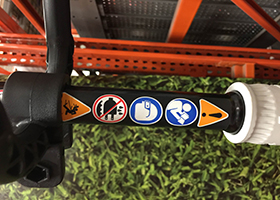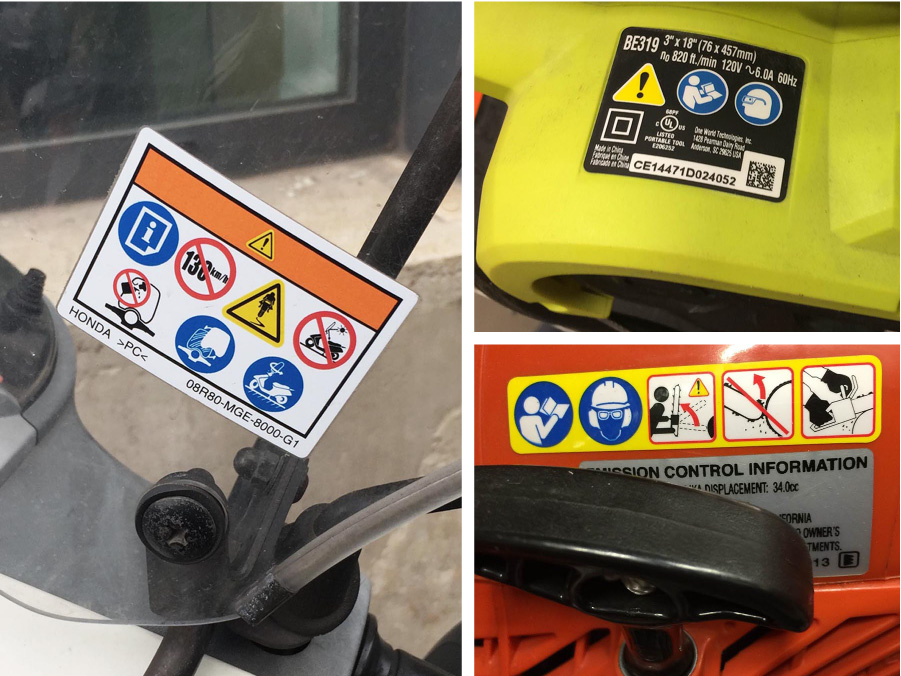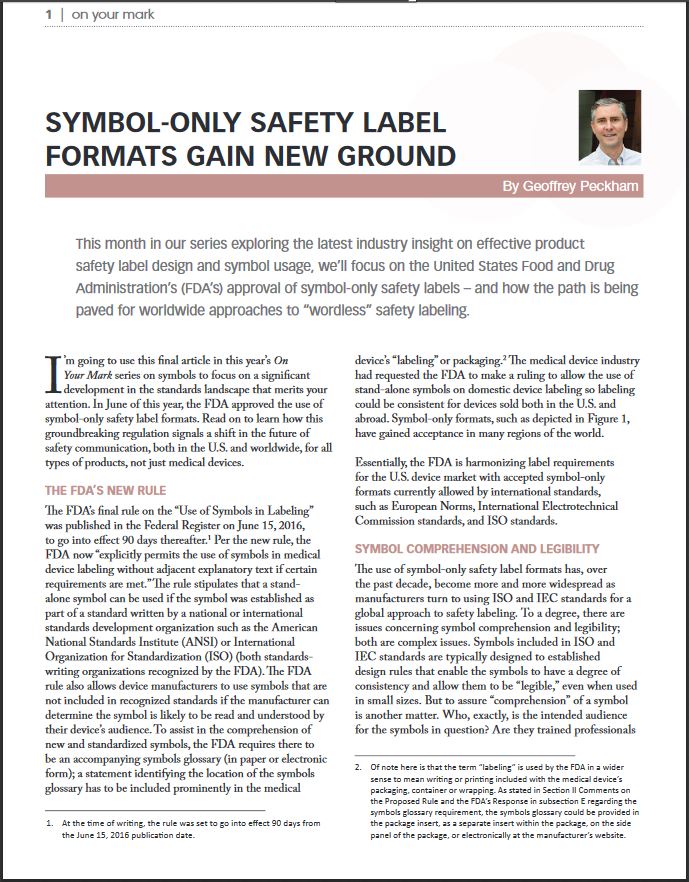Symbol-Only Safety Label Formats Gain New Ground
Posted by Clarion Safety Systems | 31st Oct 2016

When should your safety labels use symbols and text? When should they use symbols alone? What should those symbols look like?
These are the types of product safety questions that are not always easy to answer, and as such they’re ones that, here at Clarion, we assist our customers with every day by providing information on the latest standards, best practices, and product safety news.
On that note, there’s been a recent development from the U.S. Food and Drug Administration (FDA) to be aware of. Last month, an FDA rule on the “ Use of Symbols in Labeling ” went into effect which “explicitly permits the use of symbols in medical device labeling without adjacent explanatory text if certain requirements are met.”
The FDA’s approval of the use of symbol-only safety label formats is a significant development in the standards landscape. This regulation signals a shift in the future of safety communication, both in the U.S. and worldwide, for all types of products, not just medical devices. The path is being paved for worldwide approaches to “wordless” safety labeling.
The rule stipulates that a stand-alone symbol can be used if the symbol was established as part of a standard written by a national or international standards development organization such as ANSI or ISO. The FDA rule also allows device manufacturers to use symbols that are not included in recognized standards if the manufacturer can determine the symbol is likely to be read and understood by their device’s audience.
The medical device industry had requested the FDA to make a ruling to allow the use of stand-alone symbols on domestic device labeling so labeling could be consistent for devices sold both in the U.S. and abroad. Symbol-only formats have gained increasing acceptance around the world; take a look at the many examples here in this post of consumer products with symbol-only “no text” safety labels formats. Essentially, with the new rule, the FDA is harmonizing label requirements for the U.S. device market with accepted symbol-only formats currently allowed by international standards, such as European Norms, International Electrotechnical Commission standards, and ISO standards.

To assist in the comprehension of new and standardized symbols, the FDA requires there to be an accompanying symbols glossary, in paper or electronic form. Pointing viewers to a glossary of symbol meanings allows for comprehension even when symbols cannot be intuitively understood.
One of the core principles of international graphical symbol standardization is that through widespread use, symbols will become more widely understood. Consistent use of “established,” standardized symbols for established meanings will, in time, help symbols to become intuitively understood. This is especially important as the world is trending towards graphic-based safety label design where symbols are used to convey all aspects of a label's content.
For more insight on symbol-only formats, be sure to read our CEO Geoffrey Peckham’s latest article in In Compliance Magazine, part of a series on current trends in safety symbol design.
